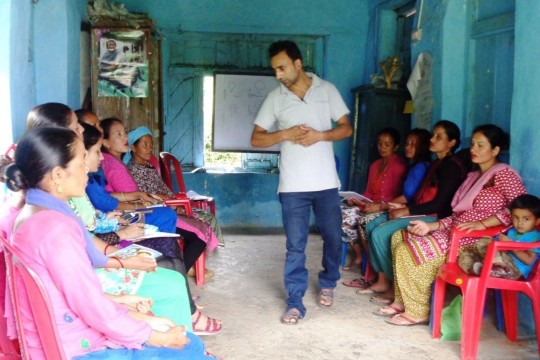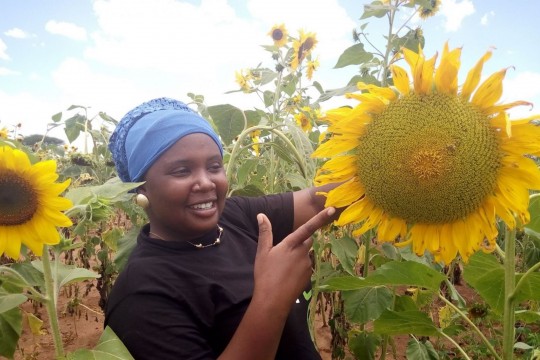Chicken training increases a farmer's profit
“Your chickens will only bring you success if you put in the time and take care of them,” says Benard Lumbasi. Lumbasi works at the poultry farm of Agrics, one of ICS’s social enterprises, and he is responsible for the daily care of more than 8000 young chicks, from birth up until they are four weeks old. At four weeks they are old enough to move to their new owners: small-scale Agrics farmers in the wider region. But not until those farmers have been trained in how to take care of their new acquisition. 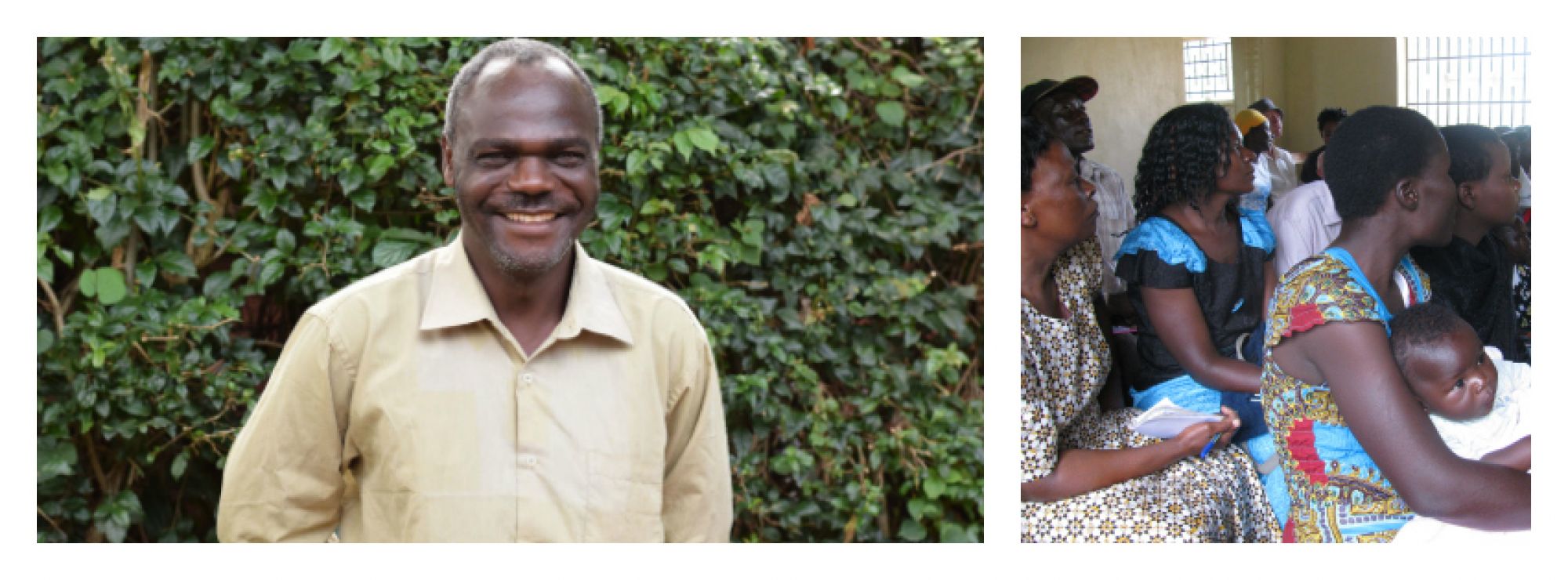
Left: Benard Lumbasi
In a small community hall in the village of Malava some thirty people have come to the training talk by Lumbasi and his colleague Kisuya. Sat on wooden benches, the group is a mixed bunch: women with babies in their arms, older men and, most noticeably, a large group of albinos and physically handicapped people. Among those present today is a farmers group made up of physically impaired farmers or children of farmers. Joseph is the leader and speaks out first: “Even though most albinos have eye problems and some of our members can’t walk or have difficulty walking, it doesn’t mean they can’t do anything. With some help they can achieve just as much as a ‘normal’ farmer. That’s why we’ve joined forces.“ 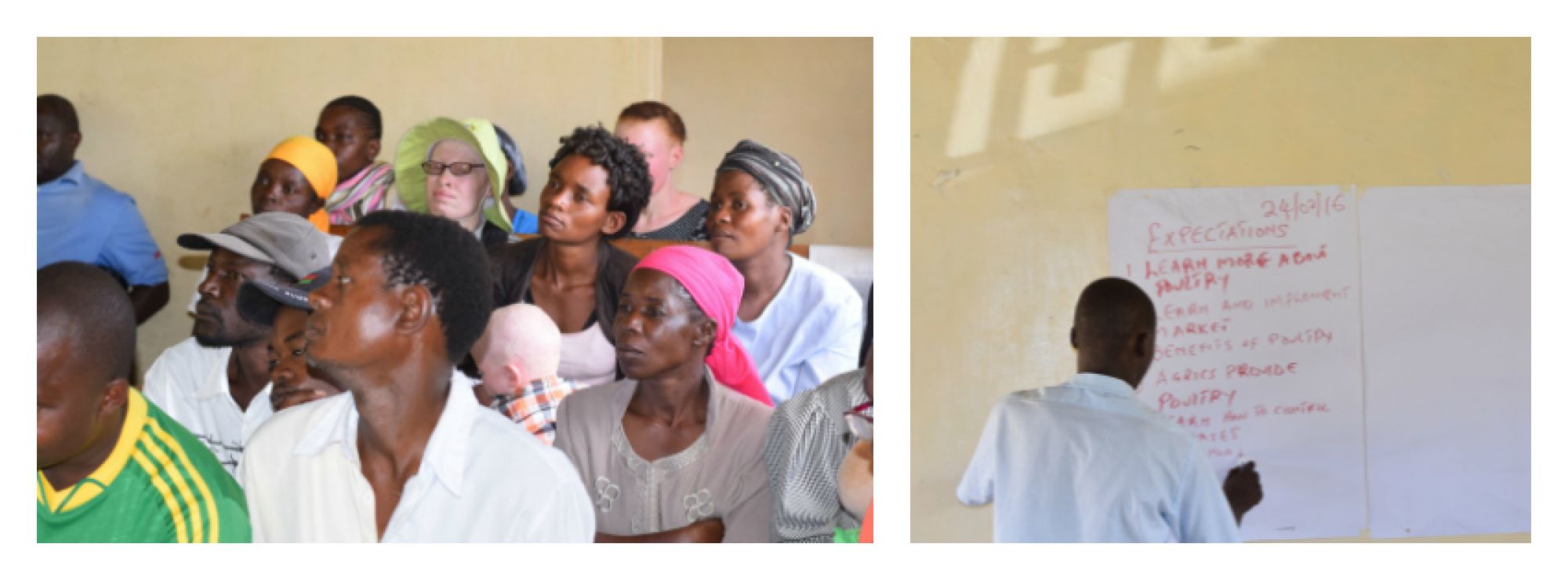
Maximum gain
Agrics helps small farmers in Kenya and Tanzania to buy agrarian ‘inputs’ (which is what certified seeds and fertilizer are called) on credit. Additionally, over the past year, farmers in Kenya have been able to buy chickens on credit. The farmer pays a deposit of 30% when the order is placed and the rest follows after 5 months. They keep chickens for both the meat and eggs. This way, a farmer is ensured of food and an income for his family outside of the harvest season. Training courses are a staple of Agrics’ services, whether farmers have ordered chickens or maize seeds, so that farmers can have maximum gain on their investment.
Diseases, diet and accommodation
Lumbasi first gauges what his listeners are expecting from the training. Today is the first session with subjects like disease control, diet and accommodation. A second training session will follow in a few weeks, in which breeding and budgeting will be covered.
“There is unfortunately no remedy for a viral infection,“ Lumbasi explains, “so it’s important to keep your chickens from getting a virus. So, take precautions!” He lists a couple of illnesses common to chickens, the symptoms associated with them and how to take preventative measures through vaccination with eye drops and injections. A short film demonstrates precisely how this is done. “Some food is poisonous to chickens,” Lumbasi continues. “Salt, for example, and young potato shoots.” “A chicken diet consists of some 75% maize, wheat and rice, which contains the most nutrition. We add to that protein-rich feed like sunflowers, some fish and beans. Letting chickens feed and run around outside gives them the chance to take in additional vitamins, not in the least by taking in sunshine. ” Nods of agreement follow.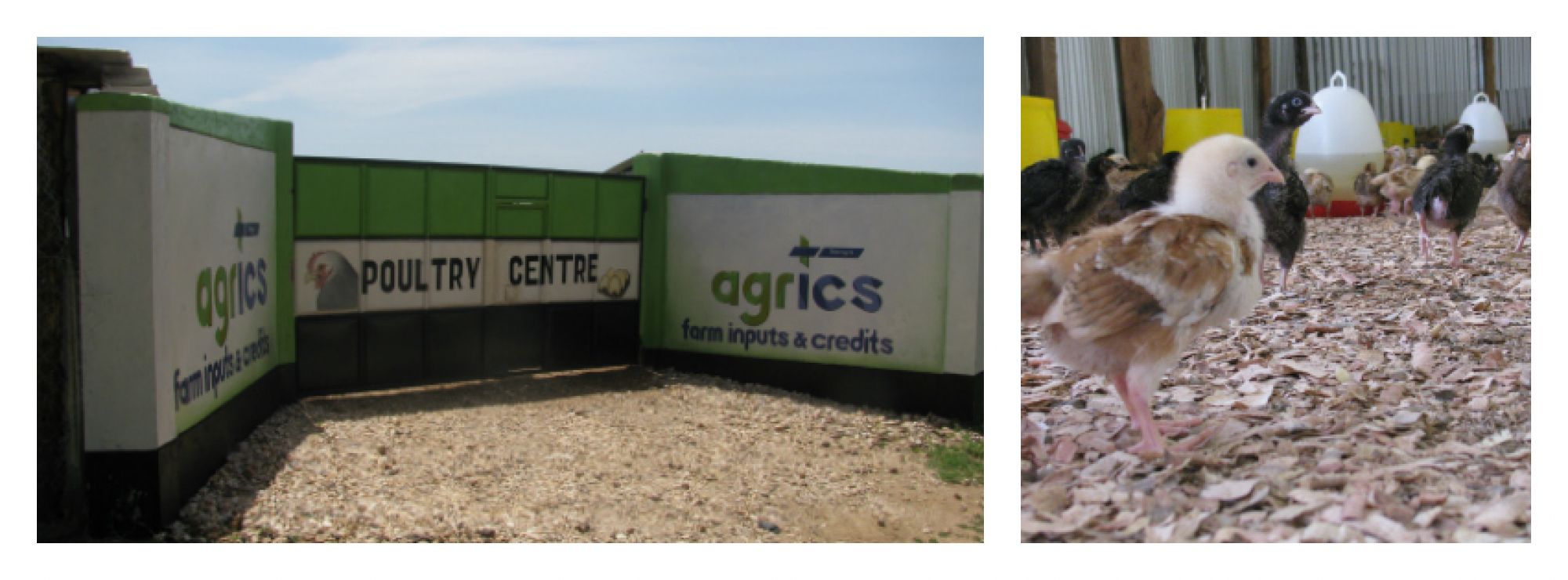
Full circle
The final subject today is the accommodation. The ideal solution is a chicken coop on legs. By letting chickens potter about on wire netting, about a meter off the ground, you can easily collect the chicken manure from the ground under the coop and use it as fertilizer for your maize plants. So that completes the circle. Maize and sunflower seeds are the chicken feed, the excrete is the fertilizer for the plants.
The first steps towards a real farming enterprise
“All of you have ordered chickens,” says Lumbasi to the farmers. “If you take good care of them, they’ll be able to provide you with eggs and meat, for your own consumption and for selling. We hope you’ll also think about buying, perhaps, maize or bean seeds on credit. Then you can grow your business step by step and make sure that your income grows too. The chickens are only the beginning, we believe.”


